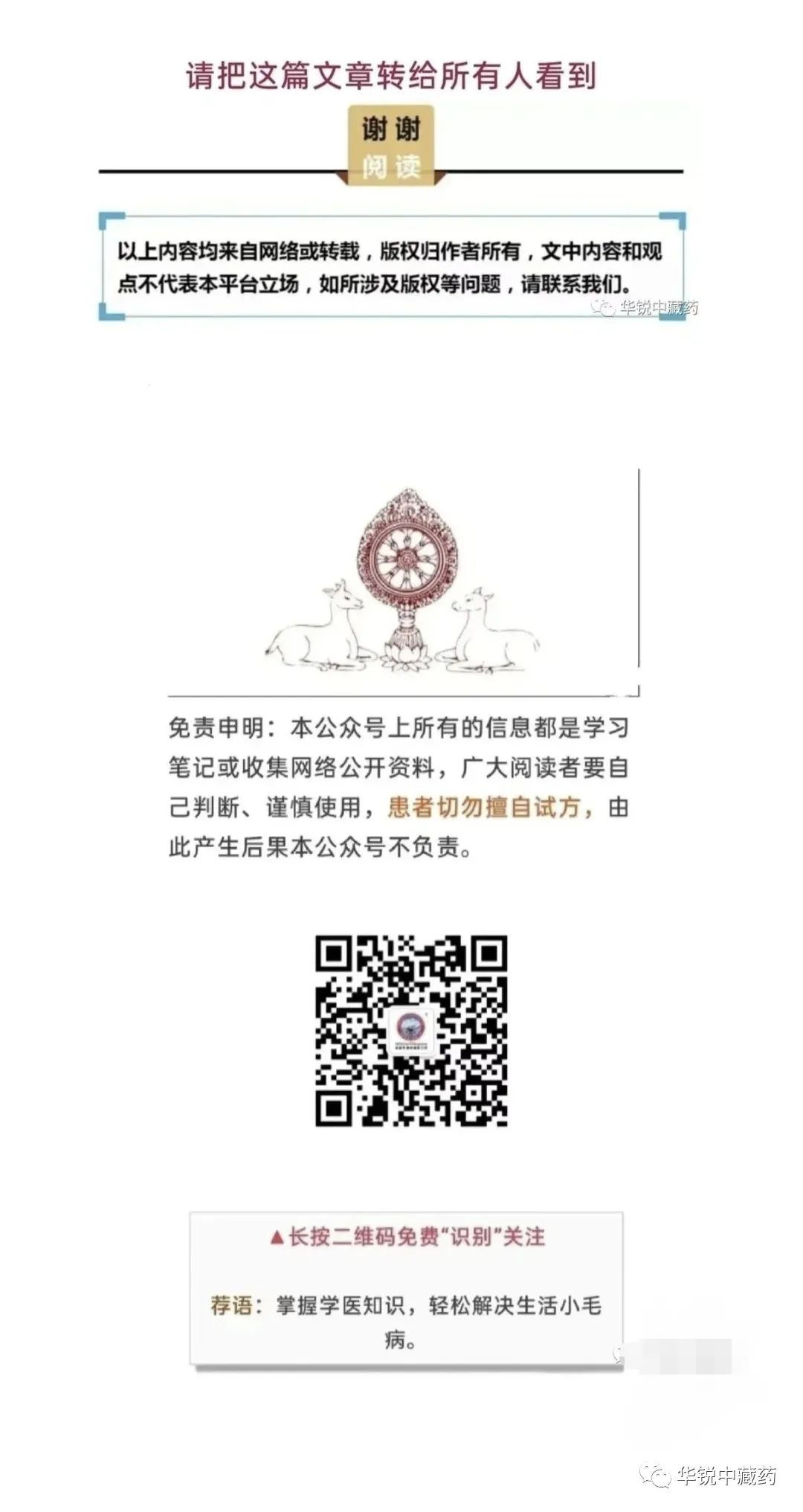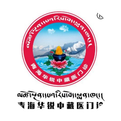Definition of BloodlettingBloodletting therapy is a unique acupuncture treatment method in Traditional Chinese Medicine (TCM). It is one of the most commonly used treatment methods since the era of the Neijing, which even considers bloodletting as the first choice for treating diseases and alleviating suffering.According to the patient’s different diseases, a three-edged needle or a thick, sharp needle is used to puncture specific acupuncture points or superficial blood vessels on the patient’s body to release an appropriate amount of blood, achieving the therapeutic purpose.Effects of Bloodletting1Antipyretic EffectIn TCM, fever is mainly classified into two types: Yang excess heat and Yin deficiency heat. The antipyretic effect of bloodletting is applicable to the former.Since Yang Qi excess inevitably leads to blood excess, bloodletting can reduce blood excess, thereby decreasing the evil heat in the blood vessels and normalizing the body’s Qi and blood.2Analgesic EffectTCM believes that “where there is flow, there is no pain; where there is pain, there is no flow.” This means that diseases with pain symptoms must have blockages in their meridians.Bloodletting therapy can directly remove the stagnant evil from the meridians, adjusting the blocked situation, allowing the meridians to flow freely, and pain can be immediately alleviated.Many acute diseases, such as acute gastroenteritis and others, have shown rapid and effective results with bloodletting therapy.3Detoxifying EffectThe detoxifying effect in TCM refers to the symptoms that arise when the body cannot resist toxic evils due to pathological conditions, such as “red thread sores” caused by excessive toxic fire, and other conditions caused by toxic evils.Bloodletting can not only expel the invading toxic evils with the blood but also, more importantly, restore normal bodily functions through the effect of “regulating blood and Qi,” inhibiting the expansion and regeneration of the evil.4Clearing Heat EffectTCM believes that internal heat disturbance can lead to various diseases, often manifested as restlessness, limb pain and swelling, irritability, and even fever, confusion, and other symptoms.Bloodletting therapy can directly expel the heat evil with the blood, applicable to various heat syndromes.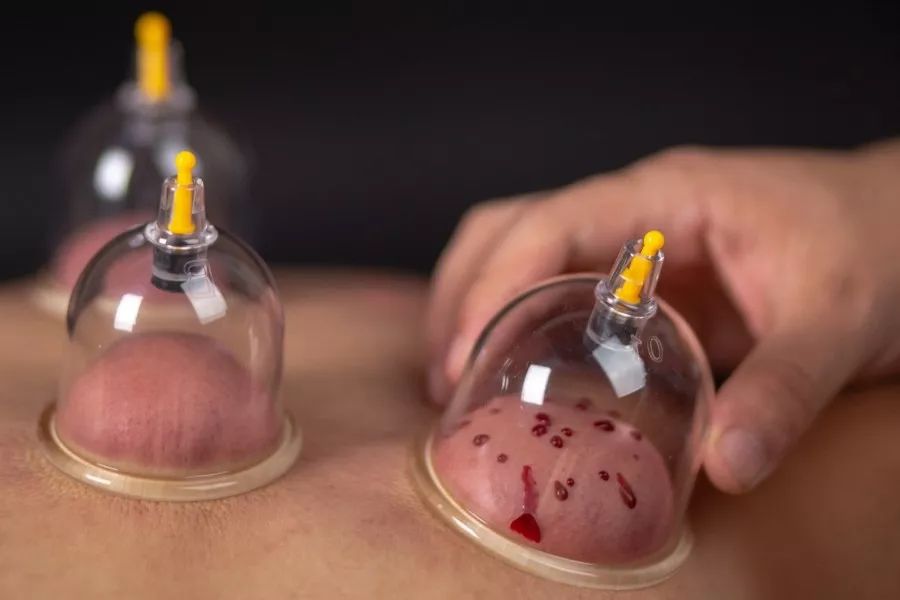 5Reducing Swelling EffectSwelling and pain are often caused by Qi stagnation and blood stasis, leading to obstruction in the meridians.Bloodletting can directly eliminate the stagnant Qi and blood along with the evil in the local meridians, promoting unobstructed meridian flow, thus achieving the purpose of reducing swelling.6Anti-Itch EffectItching is a manifestation of wind evil existing in the blood vessels, hence the treatment principle of “treating wind first requires treating blood; when blood flows, wind naturally disappears.”Bloodletting regulates blood and Qi, allowing smooth blood flow, thus eliminating wind evil and achieving the effect of relieving itching.7Relieving Numbness EffectQi deficiency cannot lead blood to the extremities, or blood deficiency fails to nourish, often resulting in numbness symptoms.Using fine needles to puncture the acupuncture points on the affected limbs to release a small amount of blood for treating numbness is guided by the theory of blood moving Qi, showing good results.8Anti-Nausea EffectAcute vomiting often belongs to excessive heat or liver Qi counterflow invading the stomach or food stagnation. Bloodletting can drain heat and pacify liver counterflow, and also has the effect of guiding intestinal stagnation downward, thus calming nausea and stopping vomiting.
5Reducing Swelling EffectSwelling and pain are often caused by Qi stagnation and blood stasis, leading to obstruction in the meridians.Bloodletting can directly eliminate the stagnant Qi and blood along with the evil in the local meridians, promoting unobstructed meridian flow, thus achieving the purpose of reducing swelling.6Anti-Itch EffectItching is a manifestation of wind evil existing in the blood vessels, hence the treatment principle of “treating wind first requires treating blood; when blood flows, wind naturally disappears.”Bloodletting regulates blood and Qi, allowing smooth blood flow, thus eliminating wind evil and achieving the effect of relieving itching.7Relieving Numbness EffectQi deficiency cannot lead blood to the extremities, or blood deficiency fails to nourish, often resulting in numbness symptoms.Using fine needles to puncture the acupuncture points on the affected limbs to release a small amount of blood for treating numbness is guided by the theory of blood moving Qi, showing good results.8Anti-Nausea EffectAcute vomiting often belongs to excessive heat or liver Qi counterflow invading the stomach or food stagnation. Bloodletting can drain heat and pacify liver counterflow, and also has the effect of guiding intestinal stagnation downward, thus calming nausea and stopping vomiting.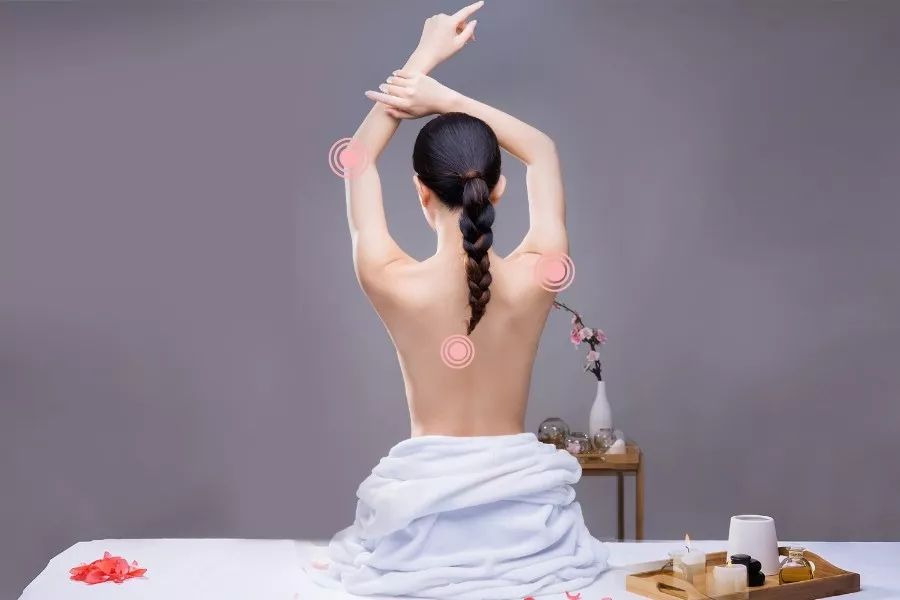 Methods of Bloodletting01Segmental Bloodletting MethodThis method selects acupuncture points for bloodletting based on the location of the disease. For diseases occurring in the head, puncture the Taiyang (Sun) point; for diseases above the navel, puncture the Chize (Cubital) or Quxi (Curved Ditch) points; for diseases below the navel, puncture the Weizhong (Middle of the Knee) point. These points are located at superficial large veins and are suitable for puncturing; Ling Shu: Nine Needles states that the Taiyin, Jueyin, and Taiyang meridians are all blood-rich meridians. For those with excess blood, bloodletting is advisable, and the Taiyang point is an extraordinary point for treating head and facial diseases with remarkable effects, while Chize (Quxi) and Weizhong are connecting points, mainly indicating visceral diseases, hence their frequent use by practitioners.In clinical practice, it is often necessary to combine other points for puncturing. This method is mainly used for deeper diseases or visceral diseases, where there are both local main symptoms and accompanying systemic symptoms.For example, for headaches with red, swollen eyes accompanied by fever, puncture the Taiyang point for bloodletting and puncture the Hegu (Joining Valley) point; for headaches and sore throat with fever, puncture the Taiyang point for bloodletting and puncture the Shaoshang (Lesser Shang) and Quchi (Pool at the Crook) points; for red, swollen, painful breasts with fever, puncture the Chize point for bloodletting, combined with local hot compresses; for upper abdominal pain and vomiting with fever, puncture the Chize point for bloodletting and puncture the Zhongwan (Middle of the Abdomen) and Liangqiu (Beam Mound) points; for lower right abdominal pain with constipation and fever, puncture the Weizhong point for bloodletting and puncture the Zusanli (Three Miles from the Foot) and Tianshu (Heavenly Pivot) points; for lower abdominal pain with purulent blood stools and fever, puncture the Weizhong point for bloodletting and puncture the Quchi and Tianshu points, etc.02Meridian Bloodletting MethodThis method is guided by the theory of “where the meridian passes, the treatment applies” to perform bloodletting along a specific meridian or several meridians affected by disease. In clinical practice, the disease is categorized according to the meridian, and bloodletting is performed along the surface meridians, following the rules of meridian pathways and collateral channels.This method is not limited to performing at acupuncture points or painful spots but can also involve puncturing superficial veins along the meridian pathways, “better to lose the point than to lose the meridian” refers to this.For example: for acute low back pain occurring on both sides of the spine, it belongs to the obstruction of the foot Taiyang meridian, puncture the Weizhong point for bloodletting and puncture the most painful area of the lower back; for pain along the spine, the obstruction of the Du meridian, puncture the Renzhong (Human Center) point for bloodletting and puncture the Qihai (Sea of Qi) and Taichong (Great Rushing) points; for wind-heat mastitis, sore throat, and difficulty breathing, the obstruction of the hand Taiyin meridian, puncture the Shaoshang point for bloodletting and puncture the Tianzhu (Heavenly Pillar) point; for vertex headache, dizziness, and eye swelling, the obstruction of the foot Jueyin meridian, puncture the Baihui (Hundred Meetings) and Taiyang points for bloodletting and puncture the Fengchi (Wind Pool) point, etc.
Methods of Bloodletting01Segmental Bloodletting MethodThis method selects acupuncture points for bloodletting based on the location of the disease. For diseases occurring in the head, puncture the Taiyang (Sun) point; for diseases above the navel, puncture the Chize (Cubital) or Quxi (Curved Ditch) points; for diseases below the navel, puncture the Weizhong (Middle of the Knee) point. These points are located at superficial large veins and are suitable for puncturing; Ling Shu: Nine Needles states that the Taiyin, Jueyin, and Taiyang meridians are all blood-rich meridians. For those with excess blood, bloodletting is advisable, and the Taiyang point is an extraordinary point for treating head and facial diseases with remarkable effects, while Chize (Quxi) and Weizhong are connecting points, mainly indicating visceral diseases, hence their frequent use by practitioners.In clinical practice, it is often necessary to combine other points for puncturing. This method is mainly used for deeper diseases or visceral diseases, where there are both local main symptoms and accompanying systemic symptoms.For example, for headaches with red, swollen eyes accompanied by fever, puncture the Taiyang point for bloodletting and puncture the Hegu (Joining Valley) point; for headaches and sore throat with fever, puncture the Taiyang point for bloodletting and puncture the Shaoshang (Lesser Shang) and Quchi (Pool at the Crook) points; for red, swollen, painful breasts with fever, puncture the Chize point for bloodletting, combined with local hot compresses; for upper abdominal pain and vomiting with fever, puncture the Chize point for bloodletting and puncture the Zhongwan (Middle of the Abdomen) and Liangqiu (Beam Mound) points; for lower right abdominal pain with constipation and fever, puncture the Weizhong point for bloodletting and puncture the Zusanli (Three Miles from the Foot) and Tianshu (Heavenly Pivot) points; for lower abdominal pain with purulent blood stools and fever, puncture the Weizhong point for bloodletting and puncture the Quchi and Tianshu points, etc.02Meridian Bloodletting MethodThis method is guided by the theory of “where the meridian passes, the treatment applies” to perform bloodletting along a specific meridian or several meridians affected by disease. In clinical practice, the disease is categorized according to the meridian, and bloodletting is performed along the surface meridians, following the rules of meridian pathways and collateral channels.This method is not limited to performing at acupuncture points or painful spots but can also involve puncturing superficial veins along the meridian pathways, “better to lose the point than to lose the meridian” refers to this.For example: for acute low back pain occurring on both sides of the spine, it belongs to the obstruction of the foot Taiyang meridian, puncture the Weizhong point for bloodletting and puncture the most painful area of the lower back; for pain along the spine, the obstruction of the Du meridian, puncture the Renzhong (Human Center) point for bloodletting and puncture the Qihai (Sea of Qi) and Taichong (Great Rushing) points; for wind-heat mastitis, sore throat, and difficulty breathing, the obstruction of the hand Taiyin meridian, puncture the Shaoshang point for bloodletting and puncture the Tianzhu (Heavenly Pillar) point; for vertex headache, dizziness, and eye swelling, the obstruction of the foot Jueyin meridian, puncture the Baihui (Hundred Meetings) and Taiyang points for bloodletting and puncture the Fengchi (Wind Pool) point, etc.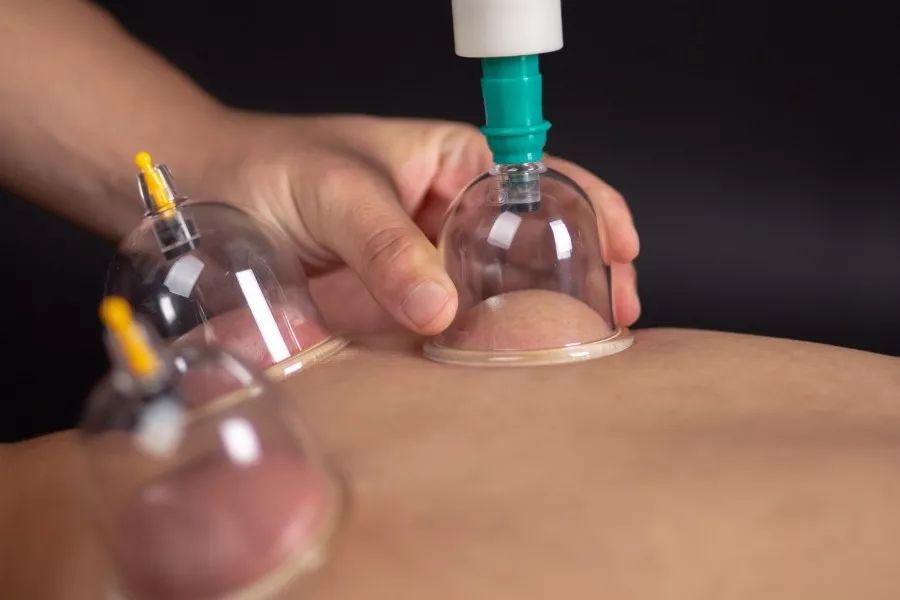 03Pattern Differentiation Bloodletting MethodThis method is guided by the theories of organ differentiation, Qi and blood fluid differentiation, and meridian differentiation to select acupuncture points for bloodletting.For example: for women with dysmenorrhea, cold pain in the lower abdomen, with pain before menstruation, it is due to Qi stagnation and blood stasis, with obstruction in the foot three Yin meridians, puncture the Sanyinjiao (Three Yin Intersection) point for bloodletting, which benefits the liver and kidney and regulates the menstrual cycle, similar to the effect of Si Wu Tang (Four Substance Decoction), puncture the Qihai point to regulate Qi, and moxibustion at the Guanyuan (Gate of Origin) point to warm the uterus, achieving the effect of regulating Qi and blood; for skin itching and redness, belonging to heat in the blood, puncture the Sanyinjiao and Xuehai (Blood Sea) points for blood regulation, clearing heat, and regulating menstruation, supplemented by puncturing the Quchi point to disperse wind and nourish the blood, puncturing the Shaofu (Lesser Palace) point to clear the heart and expel heat; for acute ankle sprains, due to local meridian Qi obstruction and blood stasis, puncture the Ashi (Ah Shi) and Taichong points for bloodletting to promote Qi and invigorate blood; for carbuncles and boils, according to the principle that “all pain and itching sores belong to the heart,” puncture the Quxi point for bloodletting to drain heart fire heat, if accompanied by fever, combine with puncturing the Dazhui (Great Vertebra) and Quchi points. If the sore appears on the neck and back, combine with puncturing the Weizhong point for bloodletting to clear the heat of the Taiyang meridian; if it appears on the hypochondrium, combine with puncturing the Yanglingquan (Yang Mound Spring) point for bloodletting to clear the heat of the Shaoyang meridian; if it appears on the limbs, puncture along the meridian or the Ashi point for bloodletting to drain the meridian heat and detoxify.04Local Bloodletting MethodThis method involves performing bloodletting at the local site of the disease, either at acupuncture points or in localized areas, suitable for diseases that are limited and superficial.For example: for swollen tongue and stiff tongue, puncture the Jinjing (Golden Liquid) and Yuye (Jade Liquid) points for bloodletting; for toothache and gum swelling, perform bloodletting at the affected area, puncturing the Hegu point; for psoriasis with itching and scaling, use plum blossom needles to prick the local area for bloodletting, combined with cupping; for late-stage filariasis with “rubber leg,” puncture the affected leg in various directions for bloodletting, puncturing the Zusanli and Sanyinjiao points; for joint sprains and swelling, puncture the painful point for bloodletting, etc.05Emergency Bloodletting MethodThis method is specifically used for rescue in critical conditions,with four main characteristics:① At the extremities, or puncturing the twelve Jing points; ② At superficial large veins; ③ Puncturing extraordinary points; ④ Selecting the transport points of the Du meridian and the Pericardium meridian.This method provides strong stimulation, rapid effect, and has the functions of unblocking meridians, expelling heat, and awakening consciousness.For example, for syncope, puncture the Shixuan (Ten Diffusions) points for bloodletting and puncture the Renzhong point; for stroke with locked jaw, puncture the Taiyang, Quxi, and Weizhong points for bloodletting, or puncture the twelve Jing points, puncturing the Yongquan (Gushing Spring) and Laogong (Palace of Labor) points; for snake bites, if on the upper limb, puncture the Quxi and Baxie points for bloodletting; if on the lower limb, puncture the Sanyinjiao and Bafeng points for bloodletting; for heat stroke, puncture the Quxi and Shixuan points for bloodletting, puncturing the Yongquan point, etc.Corresponding Acupuncture Points for Different Symptoms1Intracerebral Hemorrhage (Stroke)For any bleeding, there must be coma, thus puncture the Yintang (Hall of Impression), Taiyang, Taichong, and Shixuan points to release 1-5 drops of blood, which can promote early awakening and reduce the degree of hemiplegia. Remember: if a patient is in a coma for more than 24 hours, the rate of hemiplegia is over 90%. If it exceeds 72 hours, there is a 100% chance of hemiplegic sequelae. Therefore, promoting early awakening of the patient is a priceless secret technique; once the patient awakens, puncture the Dazhui, Quchi, and Weizhong points for bloodletting, and the patient is hopeful for recovery.2NeuralgiaIf it belongs to gallbladder meridian pain (outer thigh pain), carefully examine the Yanglingquan and Fenglong points for any obstructed blood vessels; if present, bloodletting often leads to recovery.3Long-lasting Sores and BoilsPuncture the heart point after bloodletting.4Initial Stage of Conjunctivitis, Stye Not Yet PusPuncture the Taiyang point for bloodletting, squeezing out 7-9 drops of blood, and squeezing 3-5 drops from the tip of the middle toe will allow for healing by the next day.5RheumatismPuncture 3 inches beside the third, fourth, and fifth thoracic vertebrae for bloodletting, and significant effects can be seen; many severe cases can be cured in 1-2 sessions.6Gastric and Duodenal UlcersPuncture the blue veins from the foot’s Neiting to the Jiexi points, and puncture near the outer ankle for bloodletting. For gastric ulcers, look for blood vessels within 0.5 inches above and 2.5 inches below the Jiaokou (Mouth of the Stomach) point.7Chronic Nephritis(1) Puncture the Ruyou (Scholar’s Back) point for bloodletting if there is yellow fluid; once the yellow fluid is gone, the patient will recover.(2) Around the kidneys.(3) Puncture around the navel (do not puncture the center of the navel).8Hepatitis BloodlettingPuncture the Yangjiao, Zusanli, Quxi, Yanglingquan, and Sanyinjiao points.
03Pattern Differentiation Bloodletting MethodThis method is guided by the theories of organ differentiation, Qi and blood fluid differentiation, and meridian differentiation to select acupuncture points for bloodletting.For example: for women with dysmenorrhea, cold pain in the lower abdomen, with pain before menstruation, it is due to Qi stagnation and blood stasis, with obstruction in the foot three Yin meridians, puncture the Sanyinjiao (Three Yin Intersection) point for bloodletting, which benefits the liver and kidney and regulates the menstrual cycle, similar to the effect of Si Wu Tang (Four Substance Decoction), puncture the Qihai point to regulate Qi, and moxibustion at the Guanyuan (Gate of Origin) point to warm the uterus, achieving the effect of regulating Qi and blood; for skin itching and redness, belonging to heat in the blood, puncture the Sanyinjiao and Xuehai (Blood Sea) points for blood regulation, clearing heat, and regulating menstruation, supplemented by puncturing the Quchi point to disperse wind and nourish the blood, puncturing the Shaofu (Lesser Palace) point to clear the heart and expel heat; for acute ankle sprains, due to local meridian Qi obstruction and blood stasis, puncture the Ashi (Ah Shi) and Taichong points for bloodletting to promote Qi and invigorate blood; for carbuncles and boils, according to the principle that “all pain and itching sores belong to the heart,” puncture the Quxi point for bloodletting to drain heart fire heat, if accompanied by fever, combine with puncturing the Dazhui (Great Vertebra) and Quchi points. If the sore appears on the neck and back, combine with puncturing the Weizhong point for bloodletting to clear the heat of the Taiyang meridian; if it appears on the hypochondrium, combine with puncturing the Yanglingquan (Yang Mound Spring) point for bloodletting to clear the heat of the Shaoyang meridian; if it appears on the limbs, puncture along the meridian or the Ashi point for bloodletting to drain the meridian heat and detoxify.04Local Bloodletting MethodThis method involves performing bloodletting at the local site of the disease, either at acupuncture points or in localized areas, suitable for diseases that are limited and superficial.For example: for swollen tongue and stiff tongue, puncture the Jinjing (Golden Liquid) and Yuye (Jade Liquid) points for bloodletting; for toothache and gum swelling, perform bloodletting at the affected area, puncturing the Hegu point; for psoriasis with itching and scaling, use plum blossom needles to prick the local area for bloodletting, combined with cupping; for late-stage filariasis with “rubber leg,” puncture the affected leg in various directions for bloodletting, puncturing the Zusanli and Sanyinjiao points; for joint sprains and swelling, puncture the painful point for bloodletting, etc.05Emergency Bloodletting MethodThis method is specifically used for rescue in critical conditions,with four main characteristics:① At the extremities, or puncturing the twelve Jing points; ② At superficial large veins; ③ Puncturing extraordinary points; ④ Selecting the transport points of the Du meridian and the Pericardium meridian.This method provides strong stimulation, rapid effect, and has the functions of unblocking meridians, expelling heat, and awakening consciousness.For example, for syncope, puncture the Shixuan (Ten Diffusions) points for bloodletting and puncture the Renzhong point; for stroke with locked jaw, puncture the Taiyang, Quxi, and Weizhong points for bloodletting, or puncture the twelve Jing points, puncturing the Yongquan (Gushing Spring) and Laogong (Palace of Labor) points; for snake bites, if on the upper limb, puncture the Quxi and Baxie points for bloodletting; if on the lower limb, puncture the Sanyinjiao and Bafeng points for bloodletting; for heat stroke, puncture the Quxi and Shixuan points for bloodletting, puncturing the Yongquan point, etc.Corresponding Acupuncture Points for Different Symptoms1Intracerebral Hemorrhage (Stroke)For any bleeding, there must be coma, thus puncture the Yintang (Hall of Impression), Taiyang, Taichong, and Shixuan points to release 1-5 drops of blood, which can promote early awakening and reduce the degree of hemiplegia. Remember: if a patient is in a coma for more than 24 hours, the rate of hemiplegia is over 90%. If it exceeds 72 hours, there is a 100% chance of hemiplegic sequelae. Therefore, promoting early awakening of the patient is a priceless secret technique; once the patient awakens, puncture the Dazhui, Quchi, and Weizhong points for bloodletting, and the patient is hopeful for recovery.2NeuralgiaIf it belongs to gallbladder meridian pain (outer thigh pain), carefully examine the Yanglingquan and Fenglong points for any obstructed blood vessels; if present, bloodletting often leads to recovery.3Long-lasting Sores and BoilsPuncture the heart point after bloodletting.4Initial Stage of Conjunctivitis, Stye Not Yet PusPuncture the Taiyang point for bloodletting, squeezing out 7-9 drops of blood, and squeezing 3-5 drops from the tip of the middle toe will allow for healing by the next day.5RheumatismPuncture 3 inches beside the third, fourth, and fifth thoracic vertebrae for bloodletting, and significant effects can be seen; many severe cases can be cured in 1-2 sessions.6Gastric and Duodenal UlcersPuncture the blue veins from the foot’s Neiting to the Jiexi points, and puncture near the outer ankle for bloodletting. For gastric ulcers, look for blood vessels within 0.5 inches above and 2.5 inches below the Jiaokou (Mouth of the Stomach) point.7Chronic Nephritis(1) Puncture the Ruyou (Scholar’s Back) point for bloodletting if there is yellow fluid; once the yellow fluid is gone, the patient will recover.(2) Around the kidneys.(3) Puncture around the navel (do not puncture the center of the navel).8Hepatitis BloodlettingPuncture the Yangjiao, Zusanli, Quxi, Yanglingquan, and Sanyinjiao points.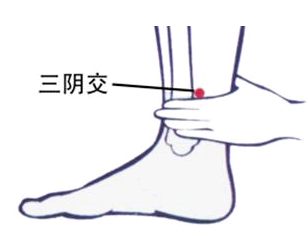 9Cirrhosis with AscitesUse the acupuncture points for hepatitis plus: Shenyu, Yaoyang, and Jiaokou (0.5 inches above and 0.5 inches outside), and Ganyu.10Effective Points for Hemorrhoids(1) Chaojiao (inside the mouth), find the white grain point; 1-3 sessions can lead to recovery.(2) For red, swollen, and ulcerated anal areas, puncture the Weizhong point, and the pain will immediately reduce.11Insomnia(1) Shenmen, Xingjian, Zusanli.(2) Dazhui, Shenda, Zhongwan, puncture and then apply cupping.12Cervical SpondylosisPainful points, Tianzong, Jianzhen, and Chize points.13Chest Internal InjuryPuncture Dazhui, Jianjing, and then the injured area.14Shoulder PeriarthritisPuncture the Shenqiao point (1.5 inches below Yanglingquan) and the Chize point; one session can show effect.15Acute and Chronic Throat DiseasesPuncture Dazhui, Erjian, Yemian, Shaoshang, Quchi, Taiyang, bloodletting will reduce pain.16Impotence(1) Puncture the Shenyu, Fuliu points for bloodletting, and apply cupping at Guanyuan and Shenyu for 15 minutes.(2) Puncture the Sanyinjiao, Mingmen, and apply cupping at Shenyu and Xuehai.17HypertensionPuncture the Taiyang, Dazhui, Erjian, Quchi points for bloodletting, and blood pressure will drop immediately; note: do not drink water within one hour after bloodletting, otherwise the effect will be poor.18AsthmaPuncture the Dazhui, Feishu, Fengmen, Gaozhao, and Liexue points for bloodletting. Apply cupping at Zhongfu and Dazhui for 15 minutes.19HyperlipidemiaPuncture the Dazhui, Taiyang, Yaoyang, Weizhong, and Quchi points.20Rheumatic Heart DiseasePuncture the Yangjiao, Weizhong, and Taiyang points.21Otitis MediaPuncture the outer ankle joint for bloodletting.22Epilepsy(1) Puncture the Taiyang, Quxi, Weizhong, and Yangjiao points.(2) Puncture the Shaoshang and Renzhong points for bloodletting. Apply cupping at Ganyu and Dazhui for 15 minutes.(3) Find painful points at the lower part of the back of the neck and puncture the Neiguan point with plum blossom needles for bloodletting.23Psychiatric DisordersPuncture the Taiyang, Quxi, Weizhong, Shuchong, Yangjiao, Fenglong, and Xinshu points for bloodletting and apply cupping.
9Cirrhosis with AscitesUse the acupuncture points for hepatitis plus: Shenyu, Yaoyang, and Jiaokou (0.5 inches above and 0.5 inches outside), and Ganyu.10Effective Points for Hemorrhoids(1) Chaojiao (inside the mouth), find the white grain point; 1-3 sessions can lead to recovery.(2) For red, swollen, and ulcerated anal areas, puncture the Weizhong point, and the pain will immediately reduce.11Insomnia(1) Shenmen, Xingjian, Zusanli.(2) Dazhui, Shenda, Zhongwan, puncture and then apply cupping.12Cervical SpondylosisPainful points, Tianzong, Jianzhen, and Chize points.13Chest Internal InjuryPuncture Dazhui, Jianjing, and then the injured area.14Shoulder PeriarthritisPuncture the Shenqiao point (1.5 inches below Yanglingquan) and the Chize point; one session can show effect.15Acute and Chronic Throat DiseasesPuncture Dazhui, Erjian, Yemian, Shaoshang, Quchi, Taiyang, bloodletting will reduce pain.16Impotence(1) Puncture the Shenyu, Fuliu points for bloodletting, and apply cupping at Guanyuan and Shenyu for 15 minutes.(2) Puncture the Sanyinjiao, Mingmen, and apply cupping at Shenyu and Xuehai.17HypertensionPuncture the Taiyang, Dazhui, Erjian, Quchi points for bloodletting, and blood pressure will drop immediately; note: do not drink water within one hour after bloodletting, otherwise the effect will be poor.18AsthmaPuncture the Dazhui, Feishu, Fengmen, Gaozhao, and Liexue points for bloodletting. Apply cupping at Zhongfu and Dazhui for 15 minutes.19HyperlipidemiaPuncture the Dazhui, Taiyang, Yaoyang, Weizhong, and Quchi points.20Rheumatic Heart DiseasePuncture the Yangjiao, Weizhong, and Taiyang points.21Otitis MediaPuncture the outer ankle joint for bloodletting.22Epilepsy(1) Puncture the Taiyang, Quxi, Weizhong, and Yangjiao points.(2) Puncture the Shaoshang and Renzhong points for bloodletting. Apply cupping at Ganyu and Dazhui for 15 minutes.(3) Find painful points at the lower part of the back of the neck and puncture the Neiguan point with plum blossom needles for bloodletting.23Psychiatric DisordersPuncture the Taiyang, Quxi, Weizhong, Shuchong, Yangjiao, Fenglong, and Xinshu points for bloodletting and apply cupping.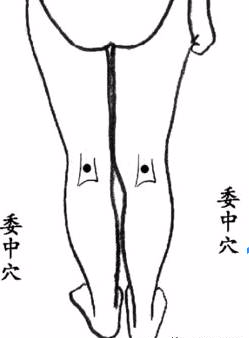 When diseases that have not healed for a long time do not respond to any method, one should perform bloodletting on the ankles, elbows, wrists, and knees, targeting those obstructed blood vessels, which may yield unexpected effects.Note: Bloodletting should generally not be performed at night; it is best done in the late morning or noon. This method is not suitable for individuals with weak constitutions, pregnant women, or those with poor coagulation mechanisms. It is particularly emphasized that the technique should be steady, precise, and gentle, rather than too forceful, and bloodletting should not be excessive.
When diseases that have not healed for a long time do not respond to any method, one should perform bloodletting on the ankles, elbows, wrists, and knees, targeting those obstructed blood vessels, which may yield unexpected effects.Note: Bloodletting should generally not be performed at night; it is best done in the late morning or noon. This method is not suitable for individuals with weak constitutions, pregnant women, or those with poor coagulation mechanisms. It is particularly emphasized that the technique should be steady, precise, and gentle, rather than too forceful, and bloodletting should not be excessive.